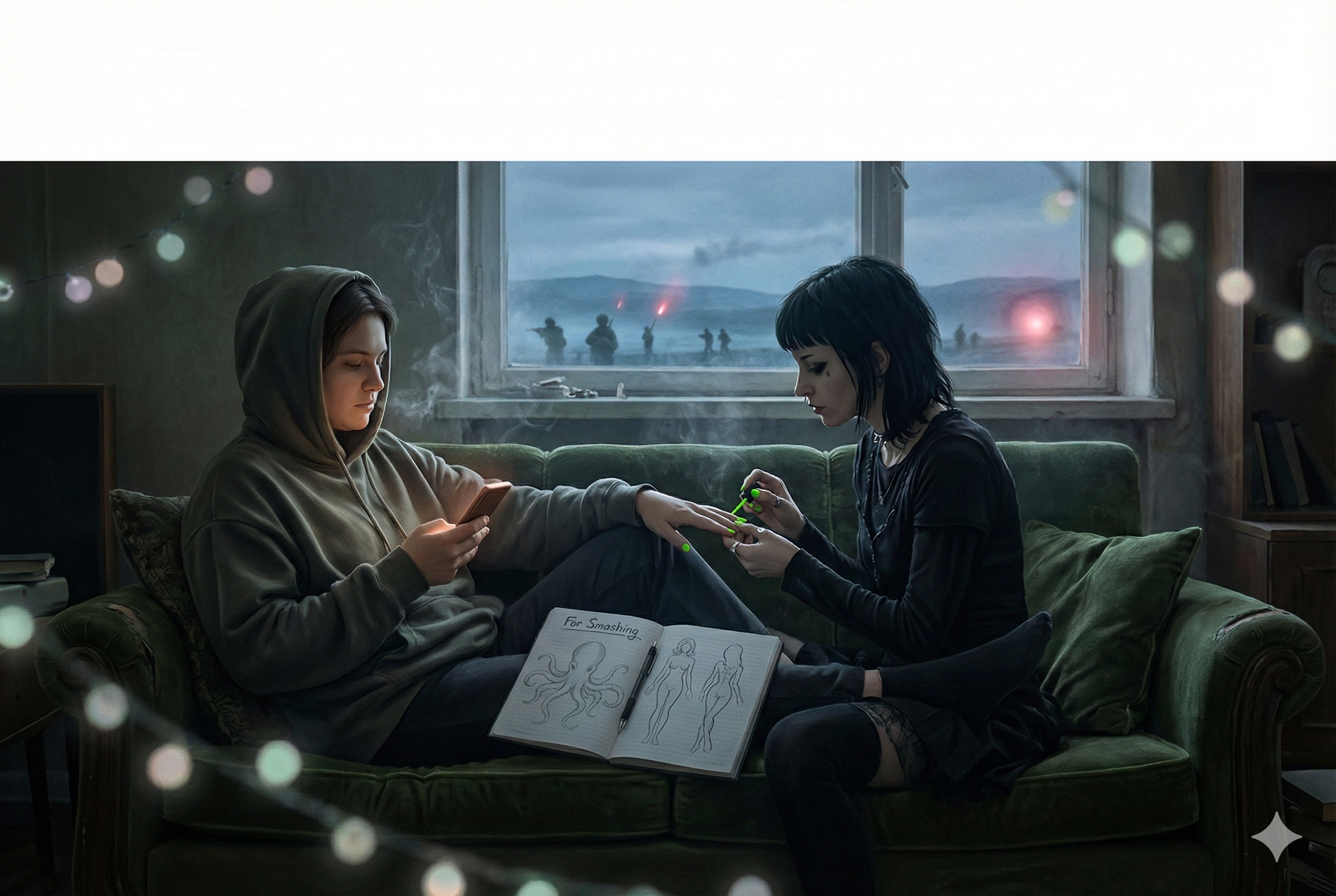Have you ever read the wonderful “Bhagavad Gita?” If you haven’t, you definitely should.
But whether you have or you haven’t, I thought it would be fun to ‘do’ a quick flash fiction exercise, rewriting the scenes, for a modern audience.
The Bhagavad Gita: A Cosmic Dance of Duty and Destiny
Imagine a grand stage set for an epic showdown, the battlefield of Kurukshetra, where two armies stand like tidal waves about to crash. Arjuna’s army, a tapestry of fathers, sons, and teachers, stands tall, their loyalty to Arjuna as unyielding as the Himalayas. Across the field, a mirror image unfolds – the opposing army, a reflection of his own, filled with familiar faces.
Caught in this storm of impending chaos, Arjuna, our protagonist, finds himself in a whirlpool of emotions. He requests a pause, a moment of stillness amidst the brewing storm, to converse with his charioteer, Krishna. His heart heavy with the weight of the world, Arjuna drops his weapons, a silent protest against the impending war.

Krishna, the calm in the storm, reassures Arjuna, “You have the right to work, but never to the fruit of work.” He introduces Arjuna to the concept of Yoga, a state of equilibrium, a dance of balance and peace. He emphasizes the importance of righteousness, a journey that often demands the sacrifice of wants and desires.
When Arjuna questions the root of evil, Krishna responds with a single word, “Desire.” It’s the fog that clouds the minds of men, leading them astray. He urges Arjuna to fight, not for victory or defeat, but to uphold his duty, his dharma.
Krishna explains that man’s journey towards goodness is a constant battle against his desires. He should work diligently, content with what life offers him. This path, Krishna assures, leads to Nirvana. He encourages Arjuna to arm himself with knowledge, the ultimate weapon in life’s battlefield.
Thank you for visiting with us. For more Literature related content, visit our blog at The Ritual.
Despite Krishna’s words, Arjuna finds himself at crossroads, unsure of his path. Krishna, the cosmic puppeteer, reveals that he orchestrates the grand spectacle of life, creating and annihilating the cosmos through His divine energy. He assures that those who worship Him are under His divine protection.

Krishna then unveils His divine manifestations within this world – as the Super soul, the ocean, the Himalayas – a testament to His boundless nature. Intrigued, Arjuna requests Krishna to reveal His universal form. Krishna obliges, unveiling His celestial form of innumerable shapes and colors. He grants Arjuna divine sight, and Arjuna witnesses the infinite dimensions of time, the cosmic dance of creation and destruction.
Overwhelmed by this revelation, Arjuna surrenders himself to Krishna, realizing that the path to the divine is through devotion and service. He returns to the battlefield, his heart filled with courage and determination, ready to honor Krishna through his actions.
And so, the curtain rises, and the cosmic dance resumes, with Arjuna, armed with divine wisdom, ready to play his part in the grand spectacle of life.
*This piece is a work of flash fiction by Willy Martinez, inspired by the styles of Franz Kafka, and William Burroughs, and is intended for Mind on Fire Books only.*
Thank you for visiting with us. For more Literature related content, visit our blog at The Ritual.

Enjoyed the Chat? Don’t Leave Without “Digital Fangs.”
Thanks for diving deep into the world of Folk Body Horror! If you want more unsettling tales where the body mutates and the land has a claim, join the Mind on Fire insider list today. As a welcome gift, I’ll send you “Digital Fangs,” a complete, dark story from the Folklore and Flesh collection—absolutely free!
GIVE ME MY FREE STORY NOW







Leave a Reply